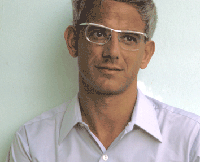|
Van Santen's houses and guests in Liberia |
|||
|
|
|
|||
|
In the pictorial story of Lofa County pictures have been included of the
three houses Van Santen occupied during his stay in Liberia. The reason for this
is that after the Liberian revolution in 1980 the situation drastically changed
in Liberia. Consequently, the images of his private residences may have some
historical interest. In particular, living as a foreigner in Foya was a unique
experience in those days: living in the middle of the Kissi with only four other
western people around - two young Swedish missionaries and two American Peace
Corps volunteers - some 300 miles from the capital Monrovia. The FAO project
headquarters in Monrovia could only be contacted twice per day by two way radio
contact, if weather conditions allowed it and provided sufficient fuel was
available to run a vehicle to charge the battery of the radio set. This was often not the case, as all fuel needed for the project had to be shipped from Monrovia, which shipments were rather irregular. |
|
|||
|
Only 35 years at that time, Van Santen was the senior resident foreigner in Foya with the duty to receive any senior official who cared to visit the area. Among them James Phillips, the Secretary of Agriculture, who visited Foya twice per month on Sundays to combine visiting his special project while taking his flying lessons. During lunch at Van Santen's house and when showing Mr. Phillips around in the project area in his car, they had many good discussions. Initially, Mr. Phillips had the strong opinion that the only way to
produce rice in Liberia was through mechanized irrigated rice schemes.
By showing him each visit also the potential of improved upland rice
farming as well as the serious problems encountered with the large scale
irrigated rice scheme (as described in 3. Assessment of The Foya Rice
Development Project) Van Santen gradually managed to convince him that
there also were other suitable ways to produce rice. Another hot issue
in their discussions was the need for a market co-operative. On this
topic they shared more ideas as compared with how to produce rice. |
Mr. James T. Phillips was among the 13 high-ranking government officials
who were
publicly executed on the beach of
Monrovia in the aftermath of the
1980 coup. They had been put on trial
by the People's Redemption Council and sentenced to death with no right
to be defended by a lawyer and no right to appeal the verdict.
The rural economy
|
|||
